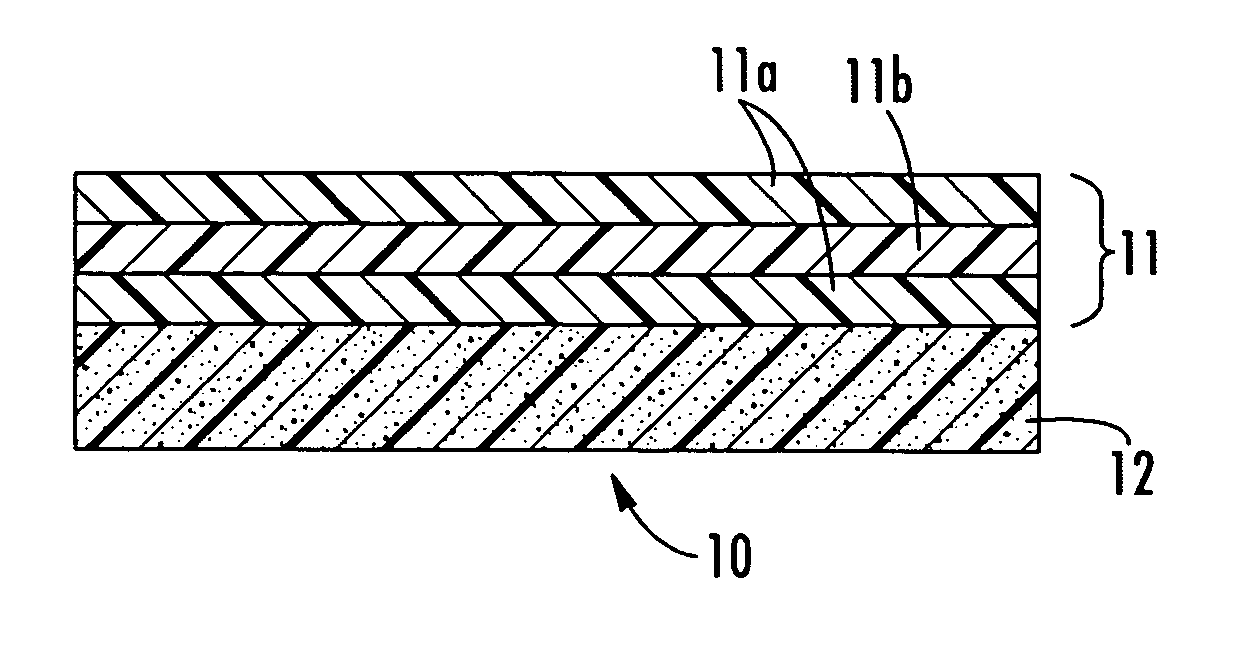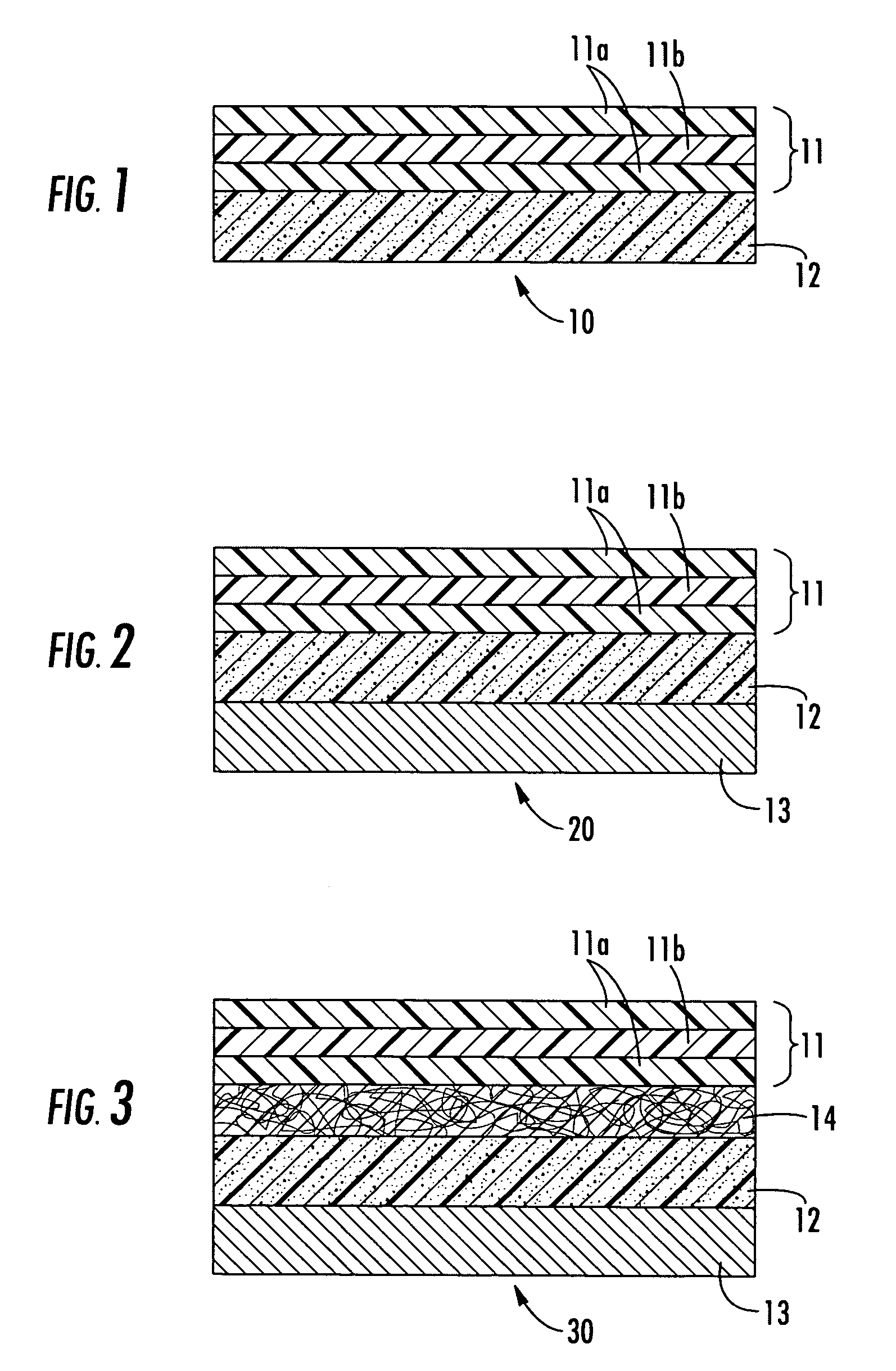Chemically resistant radiation attenuation barrier
a radiation attenuation barrier and chemical resistance technology, applied in the field of chemical resistance and radiation attenuation, can solve the problems of limited attempts to adapt these items, the threat of alternative and multi-functional hazards of international terrorists, and the threat of daily use of chemical, biological and radiological threats
- Summary
- Abstract
- Description
- Claims
- Application Information
AI Technical Summary
Benefits of technology
Problems solved by technology
Method used
Image
Examples
example 1
[0056]A radiation attenuation layer is produced by compounding a thermoplastic polyolefin matrix comprised primarily of EVA and one or more additional additives (i.e., plasticizers and processing aids) with 40–80% by weight barium sulfate and extruding a 0.5 mil to 30 mil, and more specifically a film of 20 mil thickness, onto a 0.25–4.0 ounce per square yard layer of spunbond polypropylene (SBPP), and more specifically a 0.5 osy layer of SBPP layer. The attenuant-filled film is brought into contact with the nonwoven as the nonwoven is directed through a nip formed by a pair of smooth-surfaced nip rolls. After passing through the nip, the extruded film is cooled and solidified while in contact with unheated rolls prior to wind-up.
[0057]The thus-formed nonwoven / attenuating composite is further laminated to a knitted polyester outer fabric using a solvent-based polyurethane adhesive. This radiation attenuating composite is subsequently thermally laminated to a chemical barrier. In thi...
example 2
[0059]A composite fabric is produced as in Example 1, except that the chemical barrier layer is a seven-layer coextruded film including layers of ethylene vinyl alcohol, nylon, and polyolefin, such as is commercially available from Printpack, Inc. under the designation C181-407.
example 3
[0060]A composite fabric is produced as in Example 1 except that the chemical barrier layer is Saranex® 23-P as available from Dow Chemical Company.
PUM
| Property | Measurement | Unit |
|---|---|---|
| thickness | aaaaa | aaaaa |
| thickness | aaaaa | aaaaa |
| thickness | aaaaa | aaaaa |
Abstract
Description
Claims
Application Information
 Login to View More
Login to View More - R&D
- Intellectual Property
- Life Sciences
- Materials
- Tech Scout
- Unparalleled Data Quality
- Higher Quality Content
- 60% Fewer Hallucinations
Browse by: Latest US Patents, China's latest patents, Technical Efficacy Thesaurus, Application Domain, Technology Topic, Popular Technical Reports.
© 2025 PatSnap. All rights reserved.Legal|Privacy policy|Modern Slavery Act Transparency Statement|Sitemap|About US| Contact US: help@patsnap.com


